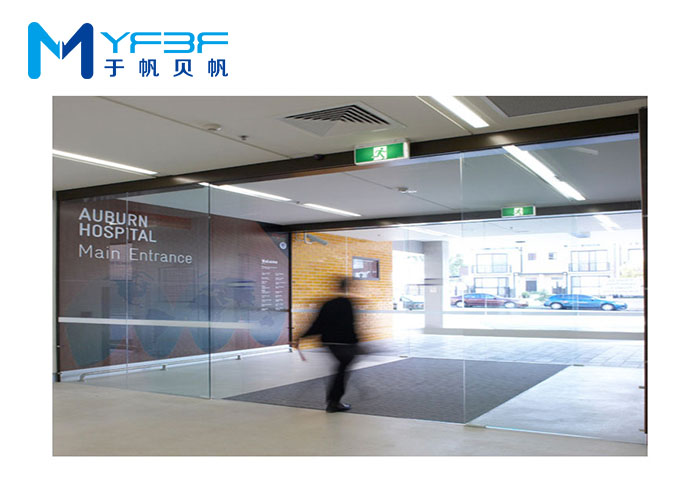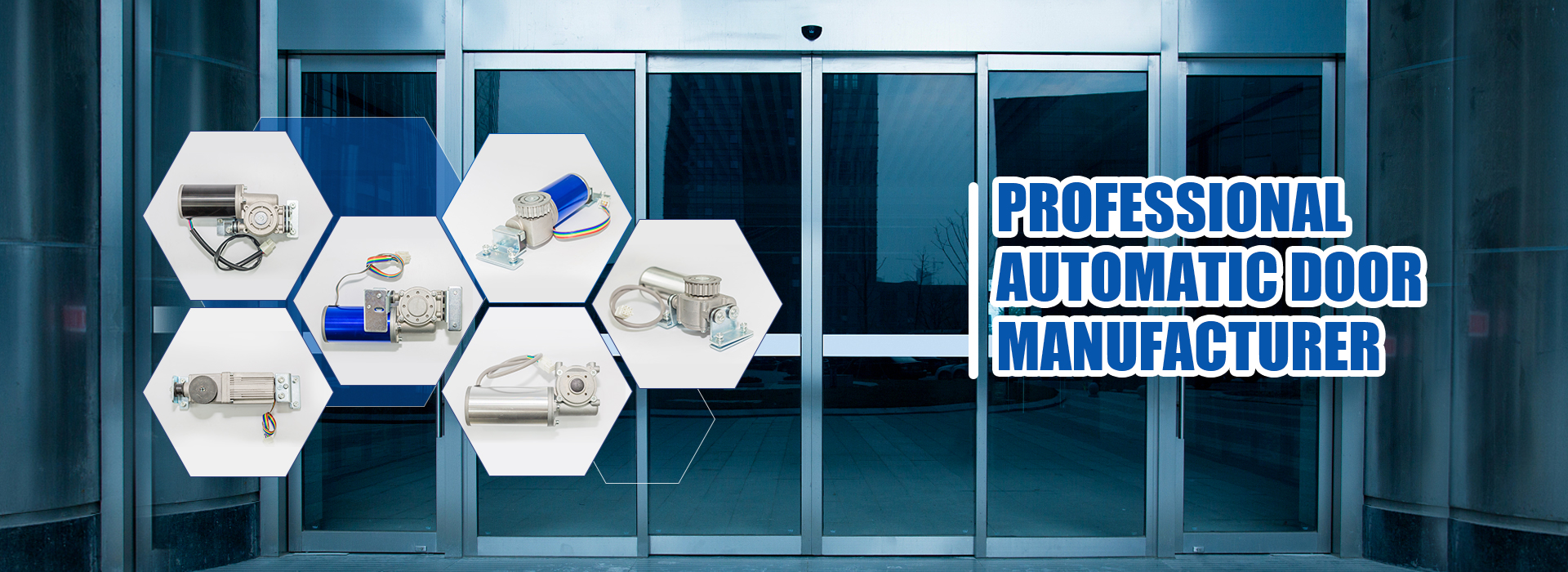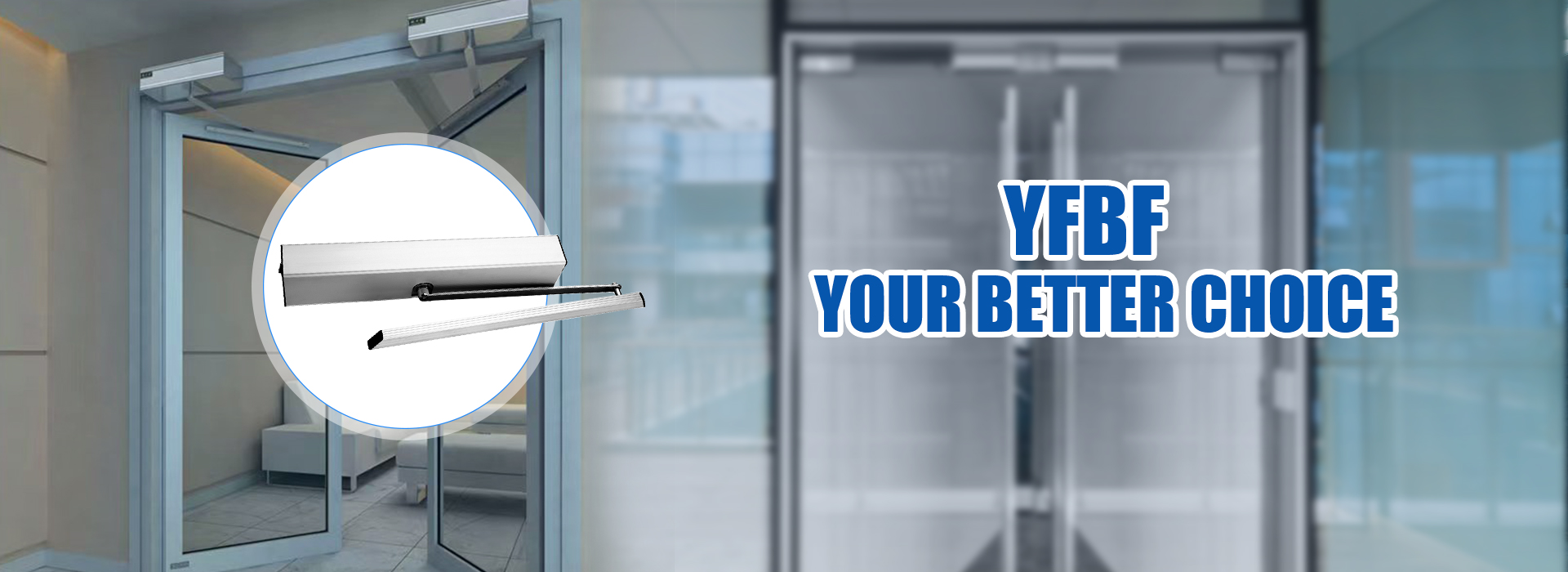
Automatic sliding door operators give people safe and easy access to buildings. These systems help everyone enter and exit without touching anything. The table below shows how touch-free entry reduces errors and helps users with disabilities complete tasks faster and more accurately.
| Metric | Non-Disabled Users | Disabled Users |
|---|---|---|
| Error Rate (%) | Plateau at 20mm button size (~2.8%) | Decreases from 11% (20mm) to 7.5% (30mm) |
| Miss Rate (%) | Plateau at 20mm button size | Decreases from 19% (20mm) to 8% (30mm) |
| Task Completion Time (s) | Decreases from 2.36s (10mm) to 2.03s (30mm) | Disabled users take 2.2 times longer on average than non-disabled users |
| User Preference | 60% prefer button size ≤ 15mm | 84% prefer button size ≥ 20mm |
Key Takeaways
- Automatic sliding door operators provide safe, hands-free access that helps everyone, including people with disabilities, move easily and quickly through buildings.
- Advanced sensors and smooth motorized systems ensure doors open only when needed, improving safety, energy efficiency, and user convenience.
- These doors meet accessibility standards, support independence for people with limited mobility, and enhance access in hospitals, public spaces, and commercial buildings.
How Automatic Sliding Door Operators Work

Sensor Technology and Activation
Automatic sliding door operators use advanced sensors to detect people approaching the door. These sensors include passive infrared, microwave, laser, capacitive, ultrasonic, and infrared beam types. Each sensor works in a unique way. For example, microwave sensors send out signals and measure reflections to spot movement, while passive infrared sensors detect body heat. Laser sensors create invisible lines that trigger the door when crossed. These sensors help the door open only when needed, saving energy and improving safety.
Sensors can cover wide areas and adjust to different traffic patterns. Some systems use artificial intelligence to learn how people move and make the door respond faster. The sensors also stop working when the door is almost closed, which helps prevent false openings.
| Feature | Description |
|---|---|
| Detection Range | Adjustable, covers wide zones |
| Response Time | Milliseconds, supports fast movement |
| Environmental Resistance | Works in dust, humidity, and glare |
Motorized Mechanisms and Smooth Operation
The automatic sliding door operator uses a strong motor to move the door smoothly. Many systems use brushless motors, which run quietly and last longer. The motor controls the speed of opening and closing, making sure the door does not slam or move too slowly. Smart control systems help the door move at the right speed for each situation.
- Motors often use less power when moving slowly and more power when opening quickly.
- Engineers test the door for balance and smooth movement. They check springs, pulleys, and rollers to make sure nothing is loose or worn out.
- Lubrication and regular adjustments keep the door running quietly and smoothly.
Safety Features and Obstacle Detection
Safety is a top priority for every automatic sliding door operator. The system includes sensors that detect if something blocks the door. If the door meets resistance or a sensor spots an obstacle, the door will stop or reverse direction to prevent injury. International standards require these safety features to protect users.
Many doors have backup batteries, so they keep working during power outages. Safety circuits check the system every time the door moves. Emergency release options allow people to open the door by hand if needed. These features help ensure that automatic sliding door operators remain safe and reliable in all situations.
Accessibility Benefits and Real-World Applications

Hands-Free Entry for All Users
Automatic sliding door operators allow people to enter and exit buildings without touching the door. This hands-free entry helps everyone, including those carrying bags, pushing carts, or using mobility aids. The doors open automatically when sensors detect movement, making access simple and fast. In a hotel study, wheelchair users and older adults valued automatic doors for making entry easier. The doors removed barriers and reduced the need for help from others. Voice-controlled systems also use sensors to open doors, giving people with physical disabilities more control and safety.
Hands-free entry reduces the spread of germs and supports public health, especially in busy places like hospitals and shopping centers.
Wheelchair and Stroller Accessibility
People using wheelchairs or strollers often struggle with heavy or narrow doors. An automatic sliding door operator creates a wide, clear opening that meets accessibility standards. The Americans with Disabilities Act (ADA) requires a minimum clear opening of 32 inches for public doors. Sliding doors meet this need and avoid trip hazards because they do not have floor tracks. In hospitals and bathrooms, sliding doors save space and make it easier for people to move through tight areas. The Houston Methodist Hospital uses ADA-compliant sliding doors to improve access for all visitors.
- Wide openings help people move freely.
- No floor tracks mean fewer obstacles.
- Easy operation benefits parents with strollers and people with mobility devices.
Support for Limited Mobility and Independence
Automatic sliding door operators help people with limited mobility live more independently. Home modifications that include automatic door openers, ramps, and handrails improve mobility and daily function. A study with older adults showed that adding features like door widening and automatic openers led to better self-perceived performance and satisfaction. The table below shows how different interventions support independence:
| Intervention Type | Accessibility Features Included | Related Functional Outcome |
|---|---|---|
| Home modifications | Automatic door openers, handrails, ramps | Improved mobility and independence |
| Wheelchair accessible features | Doors, ramps, rails, tub seats | Enhanced mobility |
| Major adaptations | Door widening, stair-lifts, bathroom changes | Increased mobility and independence |
| Multi-component interventions | Grab bars, raised toilet seats, therapy | Improved mobility and performance |
Automatic sliding door operators remove the need to push or pull heavy doors. This change allows people to move around their homes and public spaces with less effort and more confidence.
Use in Hospitals and Healthcare Facilities
Hospitals and clinics need doors that are safe, efficient, and easy to use. Automatic sliding door operators help create a welcoming and secure environment for patients and staff. Case studies show that hospitals with sliding doors report better patient access, improved safety, and easier infection control. The table below highlights benefits seen in different healthcare settings:
| Case Study Title | Facility Type | Reported Benefits Related to Efficiency and Safety |
|---|---|---|
| Sliding Door Creates Inviting Patient Entrance | Hospital | Enhanced patient access, improved safety and welcoming environment |
| Automatic Sliding Doors Installed in Health Care Facility | State Hospital | Upgraded older facility with improved infection control and compliance with health codes |
| ICU Doors Complete 7-Story Hospital Addition | Hospital | Supported infection control and safety during expansion |
| Auto Door Transforms Healthcare Office | Healthcare Office | Improved access and workflow efficiency |
Automatic sliding door operators also help control the flow of people, reduce congestion, and support energy efficiency by closing quickly after use.
Commercial, Retail, and Public Spaces
Stores, malls, banks, and offices use automatic sliding door operators to improve access for all customers. These doors help businesses meet ADA requirements and create a welcoming atmosphere. Reports from the National Council on Disability and ADA standards highlight the importance of wide, clear doorways and safe hardware. Sliding doors with top-hung designs avoid trip hazards and work well in tight spaces. Self-closing features reduce physical strain for people with limited mobility and help staff in busy settings.
- The Houston Methodist Hospital uses sliding doors to meet accessibility needs.
- ADA standards require a minimum clear opening and safe hardware.
- Sliding doors help prevent accidents and make spaces more inclusive.
Airports, Transportation Hubs, and Senior Living
Airports and train stations see thousands of people each day. Automatic sliding door operators keep traffic moving smoothly and safely. High-speed doors handle up to 100 opens per day, reducing congestion and improving security. Fast operation also helps save energy by keeping doors closed when not in use. Customer testimonials mention easier movement, better productivity, and low maintenance. Senior living communities use sliding doors to help residents move freely and safely, supporting independence and quality of life.
Automatic sliding door operators outperform traditional doors in efficiency, security, and reliability, especially in high-traffic environments.
Automatic sliding door operators help buildings become more accessible and user-friendly. The IDEA audit shows that people feel more included and face fewer barriers in modern spaces. Regular maintenance checks keep these doors reliable and cost-effective over time.
| Benefit Category | Summary of Improvement | Practical Example |
|---|---|---|
| Accessibility | Improves access for all users, meeting ADA standards | Grocery store doors allow easy entry for everyone |
| Energy Efficiency | Reduces heat loss and saves energy costs | Mall doors keep indoor temperature stable |
| Security | Restricts entry to authorized people | Office doors link to employee ID cards |
| Convenience | Increases hygiene and ease of use | Hospital doors enable quick, germ-free passage |
| Space Management | Optimizes space in busy areas | Boutique stores maximize display space near entrances |
| Cost Considerations | Saves money through lower energy use and maintenance | Installation costs balance out with long-term savings |
FAQ
How does an automatic sliding door operator detect people?
Sensors like microwave or infrared detect movement near the door. The system opens the door when it senses someone approaching. This technology helps everyone enter easily.
Can automatic sliding door operators work during power outages?
Many models, such as the YF200, offer backup battery options. These batteries keep the doors working when the main power goes out, ensuring continuous access and safety.
What types of buildings use automatic sliding door operators?
- Hospitals
- Airports
- Shopping malls
- Offices
- Senior living communities
These doors improve accessibility and convenience in many public and commercial spaces.
Post time: Jun-29-2025



